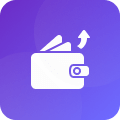Identify Design flaws with UX Audit
February 3, 2023 | Read Time : 3 mins
Table of Contents
Do you know how it feels when your website visitors get all the way to the checkout but don’t convert?
What kept them from clicking the “purchase” button? Or, more likely, you used to have consistent and predictable sales, but your growth slowed, and your level of involvement dropped. How can you discover the cause of this digital decay?
A thorough UX Audit will help you identify your product’s flaws and make recommendations for addressing them and enhancing user experience.
What exactly is a UX Audit?
A user experience audit, often known as a UX Audit, is a process that uses research and analysis to identify usability flaws. The ultimate purpose of the UX Audit is to identify important gaps in the user experience that prohibit consumers from doing the intended activities.
In addition to highlighting issues, a good user experience audit presents businesses with ideas for creating a more smooth user journey, which will improve customer engagement and boost conversions.
The user experience audit allows businesses to uncover even modest usability faults that can significantly impact consumer satisfaction.
UX Audit may help you answer important concerns like
- What are the frictions that users encounter along their customer journey?
- How do these bottlenecks affect customer behaviour?
- Where does a user quit a website?
- The variety of methods used during the UX audit allows one to evaluate issues from several angles and find their most likely reasons.
How does a UX Audit work?
UX audit has various methods to determine the root cause of your product’s underperformance.
Here are some Methods, Tools and KPIs that are often used during a UX audit:
- Review of business and user objectives
- Conversion metrics
- Customer care data
- Sales data
- Traffic/engagement
- Compliance with UX standards
- Usability heuristics
- Mental modeling
- Wireframing & Prototyping
- UX Best Practices
When to consider a Usability Audit
A good visual design can improve a product’s overall user experience by making people feel better about it. Here’s how visual designers can use their skills to create better UX.
- Suppose you want to understand more about your customers and expand your business quickly. In such cases, a user experience audit will be extremely beneficial regardless of when it is performed. Whether a UX or UI audit, startups looking to validate their MVPs will also find it highly valuable.
- Consider a UX audit as a health check. It can be conducted at any stage throughout your product’s life cycle to discover existing performance concerns and opportunities for improvement.
- If you’re redesigning an app or website that has already been in use for a while, perform a comprehensive design audit. It will help you evaluate the current user flows and detect problems, distractions, or bottlenecks preventing users from performing the desired tasks.
- Suppose you plan to develop and execute new functionality. A UX audit will help you understand whether the new functionality is beneficial to your product and whether users require it. Furthermore, you will learn whether your feature is well-received by customers and whether they experience any navigation difficulties.
- UX auditing is not just employed when you have an existing digital product. You may use the same method to test a new product design before it is built. You are still flexible enough at this phase to make modifications that will not result in substantial time and budget losses.
What is the outcome of the UX Audit?
A usability audit may drastically improve your product’s performance, opening up new business opportunities. However, usability testing isn’t a magical cure to solve your product’s problems.
UX audit improves functionality as a consequence of usability audit. Customer satisfaction grows as functionality improves. Users are no longer frustrated or confused. From a business perspective, a satisfied user means a higher conversion rate and increased sales.
The following are the top three commercial benefits of UX:

satisfaction rate

expenses

with customers
How to Conduct UX Audit?
There is no widely acknowledged approach for conducting a UX audit. Companies and individual UX professionals may take different approaches. However, the general stages and the ultimate goals are often the same.
The actual process will differ based on the complexity of the product, the scope of work, and your goals.
Step 1: Learn about the product and the company.
It is essential to begin the UX audit by learning about the product and the company’s business goals and then to establish the key objectives and expectations for the usability and design audit. We normally strive to meet with our partners and conduct workshops and interviews to learn about the company and its current challenges. We want to understand the target audience’s behavior, the sections that lead to misunderstanding, the reasons for a poor conversion rate, and the user flows that require to be enhanced.
Step 2. Gathering information
At this point, UX experts should be familiar with your product and its core issue, whether it is a low conversion rate, a high user drop rate, new feature validation, or something else. As part of the UX audit process, we test the actual product with your users to detect design flaws, areas that cause misunderstanding, and areas that negatively affect the product’s business performance.
Step 3: Gathering results for the UX audit report.
An auditor evaluates the findings and offers short- and long-term recommendations to improve the usability and performance of your product at the end of the UX audit process. Expect to receive the usability tests, interview recordings, quantitative data analysis insights, and the UX audit report.
Every UX Audit concludes with a compilation of the results and suggestions to the client or larger team. Once all the data has been gathered from various steps, it should be analysed to get an understanding of how the product is being used and where users have problems. The client should be informed of your results in a document that contains a simplified version of this information.






